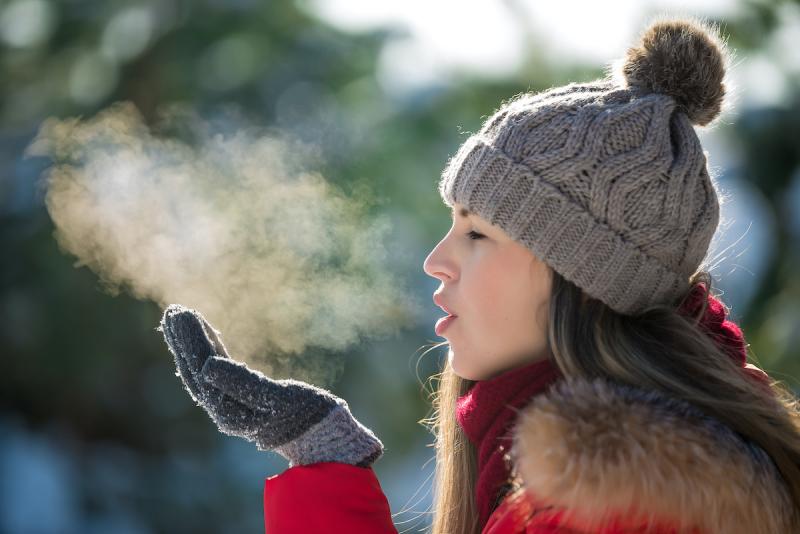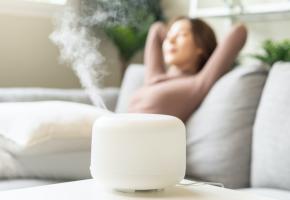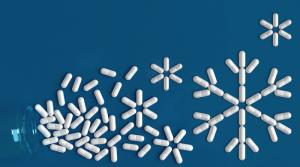
During the winter months, people will take steps to winterize their homes and vehicles. They shut off outside water to keep pipes from freezing and may put snow tires on their car if they live in areas with heavy snowfall. They may also winterize their wardrobe, putting on heavier clothes when they venture outdoors.
Most of us don’t think about winterizing our bodies, primarily because indoor heating and cooling tend to reduce the impact of seasonal weather, but perhaps we should. In different seasons of the year, people are more prone to specific health problems, for instance, allergies in the spring, heat stroke in the summer, and colds and flu in the winter.
Most people know that wintertime is the cold and flu season, a time when we are more susceptible to viral infections, sore throats, and pneumonia, but it’s not just infectious disease that increases during winter months. People are also more prone to itchy skin, joint pain, and depression during the winter. People with asthma are more prone to asthma attacks, too. Even heart attacks, the leading cause of death in Western society, are more likely to happen in the winter months.
Why is this the case and what can we do about it? Those are the questions we’ll try to answer in this issue of Sunshine Sharing. We’ll cover the topic of seasonal changes by discussing how the body changes to adapt to the heat of summer and the cold of winter. We’ll show why we’re more prone to certain diseases in winter and discuss how we can boost wintertime health with diet, supplements, and appropriate lifestyle changes.
 Traditional Wisdom and the Cycles of Nature
Traditional Wisdom and the Cycles of Nature
Traditional systems of medicine understood cycles of nature and took factors like climate and the seasonal availability of herbs and foods into account. We’ll borrow from this traditional wisdom and some modern science to focus on the differences in the body during the summer and winter.
The body is an energy-generating machine and produces excessive heat as a by-product of energy generation. During the summer, when it is warm, this heat must be dissipated to keep the body from overheating. Circulation to the periphery of the body is opened up as are the sweat glands, which allows heat to be more readily discharged by moisture evaporating off the skin as sweat.
People tend to be more physically active in summer, so they can burn carbohydrates faster, too. This allows people to thrive on less calorie-dense foods, like fresh fruits and vegetables. The antioxidants in the fruits and vegetables that are readily available during this time of year also reduce heat generation by cooling oxidative reactions.
Wintertime Changes
During the winter, the circulation pulls inward to conserve heat, which means less blood flows to the extremities. Instead of being open, the skin pores tend to be closed. The skin also becomes more oily to help hold heat and moisture in the body. Because the body needs to generate more heat to stay warm, it needs more calorie-dense foods to generate heat.
During winter, less fresh food is available. Thus, less vitamin C-rich food is available, lowering intake of this nutrient. Vitamin D levels, which are affected by exposure to sunlight, also decline, due to the shorter days and longer nights of winter, coupled with the tendency to stay indoors. Lack of these nutrients may be a major factor in creating the cold and flu season because both are critical nutrients for a healthy immune system.
In addition to the lack of sunlight, staying indoors more when it is cold also makes it easier for infections to spread. It also allows more accumulation of toxins in the indoor air from outgassing of paint and other building materials, as well as a tendency for dust, pet hair, and other irritants to accumulate. This is compounded by the fact that we want to keep everything tightly shut to conserve our heating bills and generally don’t air out our homes by opening windows and doors like we do in the spring and summer months. All these factors play a role in making us more prone to infectious diseases, particularly those involving the respiratory system.
Winter and Respiratory Problems
Because moisture freezes in cold temperatures, and because indoor heating tends to dry the air, there is often a lack of moisture in the air in wintertime. In fact, indoor relative humidity can fall down as low as one percent. Dry air will more rapidly dry out the mucus on the membranes of the lungs and sinuses.
In addition, cold air tends to cause the bronchioles to contract to protect the lungs. Cold, dry air can also trigger the release of histamine, which constricts the air passages contributing to increased problems for people with asthma, reactive airway disease, and COPD.
Other Wintertime Changes
The reduced exposure to light also affects the mind via the pineal gland. Light entering the eyes is important in regulating mood. A condition known as cabin fever has been noted in people who live in far northern climates where the days are very short (perhaps only a few hours long) and the nights are very long. This lack of exposure to sunlight contributes to depression, especially when there is a lack of vitamin D.
Reduced activity level, coupled with the inward flow of blood, can cause less oxygen to reach the extremities of the body. This can aggravate joint and muscle pain. So, less activity and blood flow will make arthritis symptoms worse. Reduced activity and holiday treats can also lead to excess weight gain.
These are examples of how the seasonal changes brought on by winter can increase susceptibility to various ailments. So, what can we do to compensate for these changes? That’s what we’ll look at next.
Additional Resources
Strategies for Health by Steven Horne
Become a Member
Steven Horne's monthly member program is a way for you to get great information about herbs and natural healing to build your herbal business. Including the ability to share issues of Sunshine Sharing like this one. Click here to learn more.


